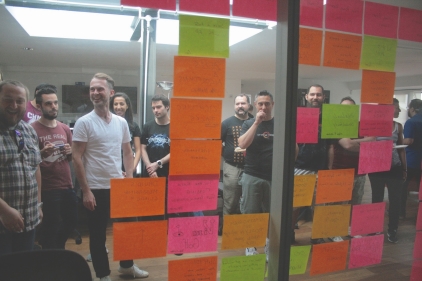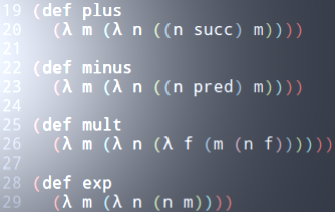CAREER OPEN HOUSE | 31st Jan, 7pm
We’re hiring Java and .NET Craftspeople in London & Barcelona. Come and meet us at our Career Open House on 31st January to learn more.
Async systems with sync clients
- By Felipe Fernández
- Posted 28 Apr 2016
- distributed systems akka architecture sync async reactive
As the Reactive Manifesto says Reactive systems are:
- Responsive
- Resilient
- Elastic
- Message Driven
The last principle often goes together with non-blocking async protocols. This style of communication "allows recipients to only consume resources while staying active, leading to less system overhead". This fits perfectly with new demands of efficiency derived from the elastic model of cloud providers. However not every system is async and integrating an async system with a sync client could be tricky.
Integration Strategies
We can fix the mismatch of communication styles through a couple of strategies.
Polling
This involves work for both parties. First round trip of this protocol involves client sending some request to the server with an outcome of ACK/NACK. This is called fire and forget. Assuming HTTP, the server will return status code 202 (Accepted). The async process will eventually succeed or fail and that result will be exposed by the server via a different endpoint. The client will have to periodically poll that endpoint to figure out the status of the operation.
Polling is by nature inefficient but could be a good solution when the technological stack doesn't allow bidirectional protocols like Web Sockets.
Hiding asynchronicity
If we don't have control over those clients, we'll probably have to hide our async nature under some sync layer. That layer will implement a polling or pub/sub mechanism bounded by a timeout.
Learning by example
In this series of posts we'll implement last strategy with a pub/sub mechanism. We'll add some essential complexities to our domain to make the exercise more juicy.
We'll be working on something similar to Craiglist, a website with classified advertisements. However our platform will have a social focus (as everything nowadays). That means that a user can post an item into some group and/or to her followers. People can report dubious items and we will take seriously those reports as they're threats to our reputation. So much so that the authorities have direct access to an API that can take down an item immediately.
Our system is formed by several microservices based on Akka, using Kafka for inter-process communication. The police platform has only sync clients and they don't seem keen to implement a polling mechanism to verify that an item has been actually removed. We need to communicate with them synchronously and that's not negotiable. In the next posts we'll see the details of our solution, but as an advancement, let's see the high level architecture. Don't worry if you don't understand everything yet.

Thank you for your time, feel free to send your queries and comments to felipefzdz.

We're hiring!
Enjoying this article?
Related Blogs
Functional Programming and Reactive Architecture Part 2
- Alessandro Di Gioia
Functional Programming and Reactive Architecture Part 1
- Alessandro Di Gioia
Unit vs Integration Akka Testing
- Felipe Fernández
Finite state machines with Akka
- Felipe Fernández
Premature Microservices
- Mashooq Badar
What does RESTful really mean
- Carlos Morera de la Chica
State in scalable architectures
- Felipe Fernández
Recent Blogs
Lambda Calculus in Clojure (Part 2)
- Sergio Rodrigo Royo
One Year of Codurance Barcelona
- Guillem Fernandez
Functions
- Christian Panadero Martinez
Applicative Functors and data validation, part II
- Carlos Morera de la Chica
Living a Coderetreat as a facilitator
- Raquel M Carmena
Tetris - Failed Experiment: Next Steps
- Dan Cohen

Software is our passion.
We are software craftspeople. We build well-crafted software for our clients, we help developers to get better at their craft through training, coaching and mentoring, and we help companies get better at delivering software.
Latest Blogs
One Year of Codurance Barcelona...
Functions
Useful Links
Contact Us
London EC1V 0JR
Phone: +44 207 4902967
Carrer Aragó, 208
08011, Barcelona
Phone: +34 689 723 737
Email: hello@codurance.com













